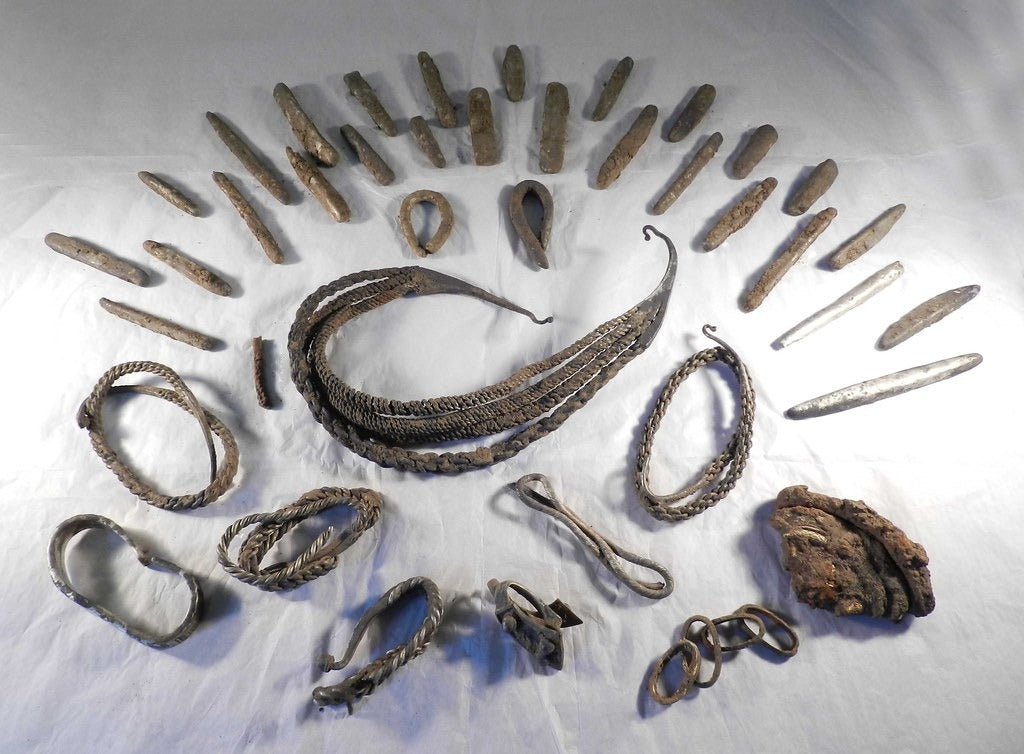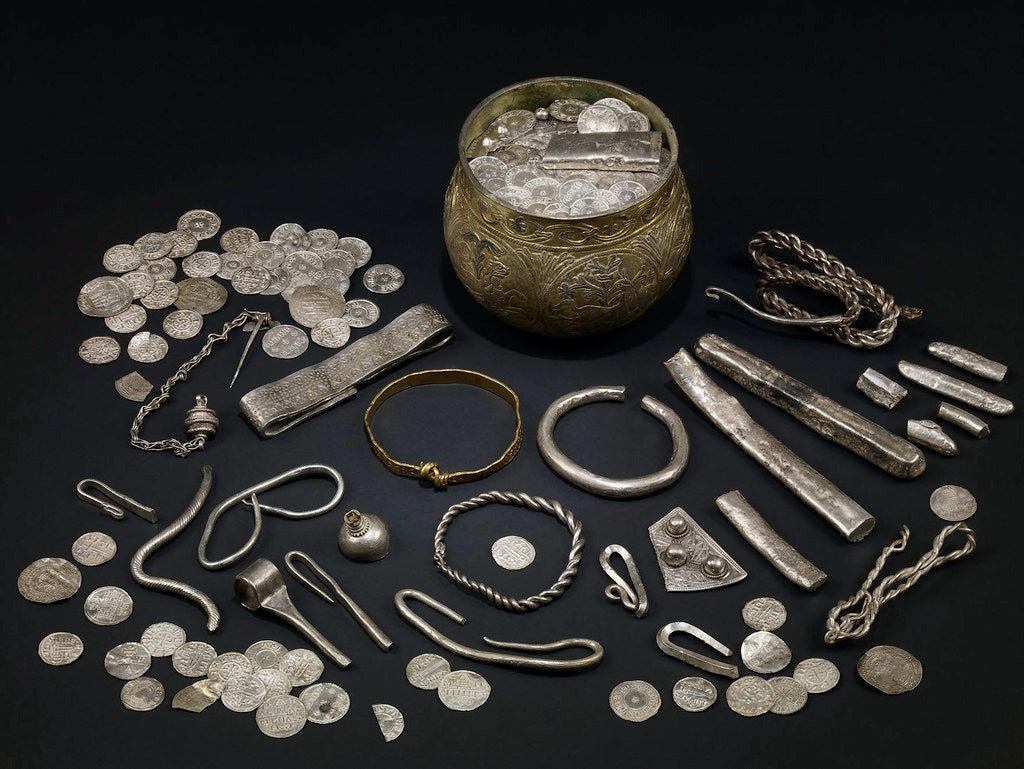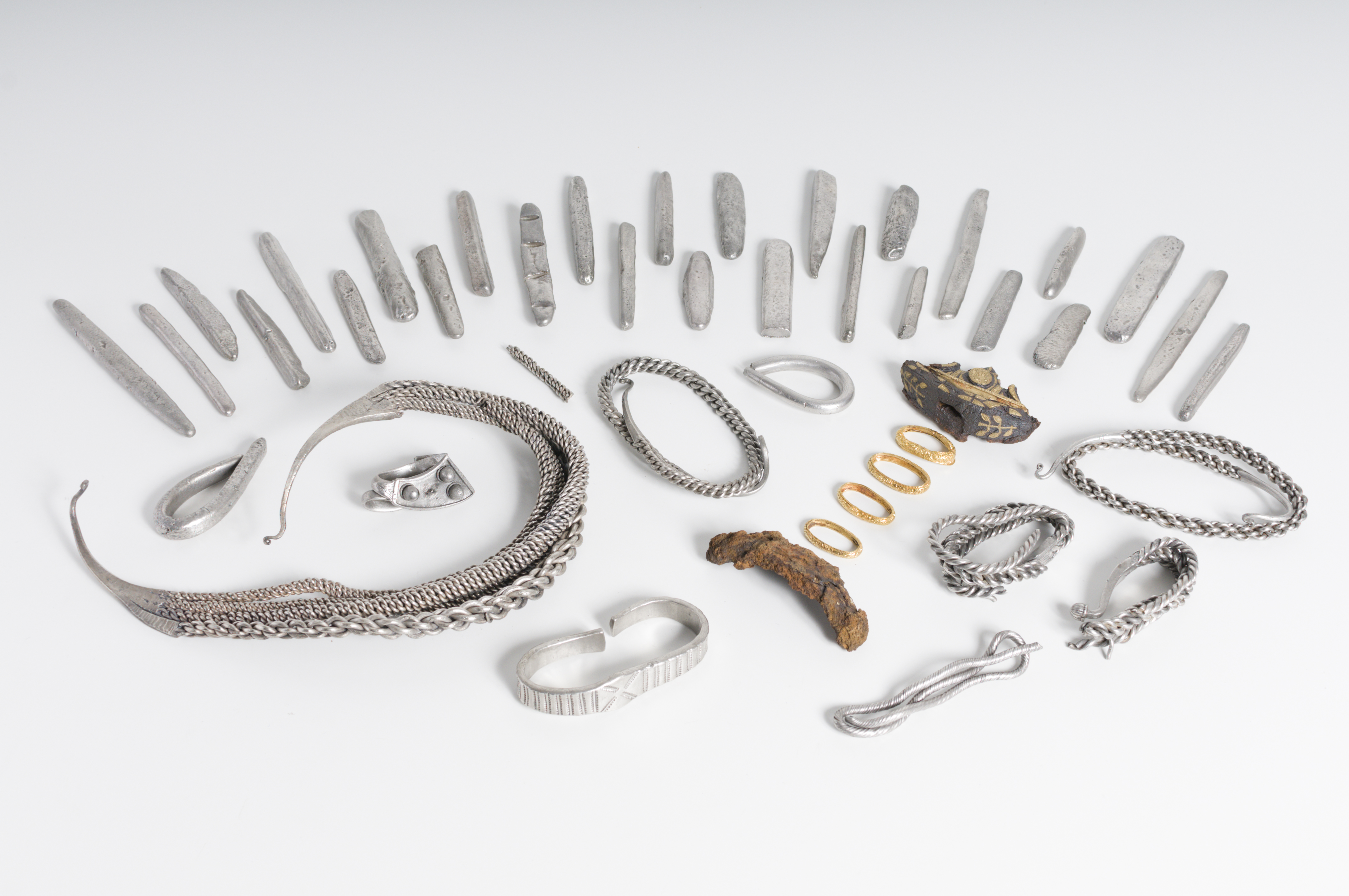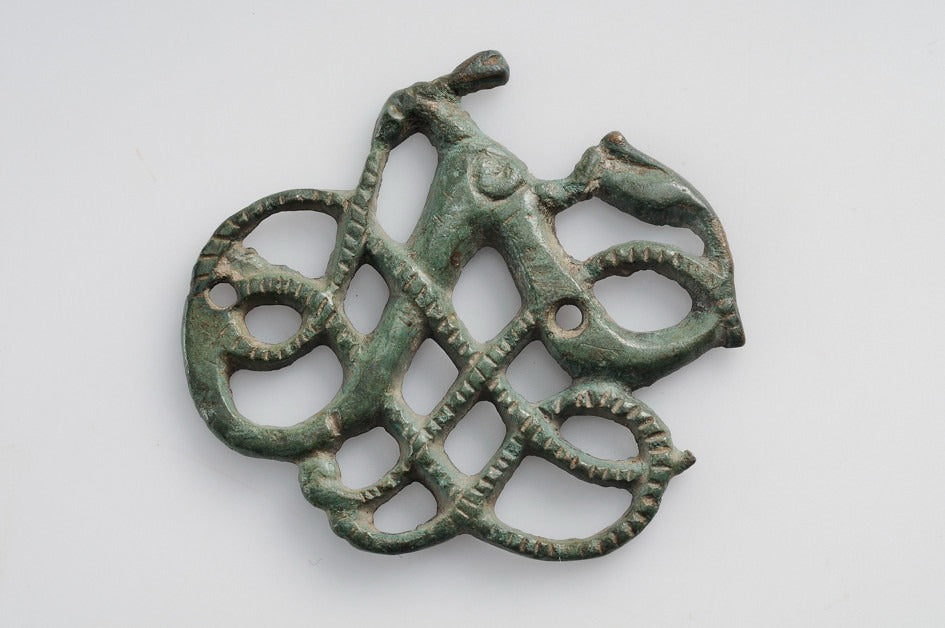
The Bedale Viking Hoard: Norse Treasure from Medieval Yorkshire
The Bedale Hoard stands as one of the most significant Viking-age discoveries in North Yorkshire, comprising an assemblage of precious metal objects and military equipment dating to the late 9th or early 10th century CE. Discovered in 2012 near Bedale, North Yorkshire, this remarkable collection offers invaluable insights into Viking presence and material culture in northern England during the medieval period.
Discovery and Archaeological Context

Asygarth Falls, Bedale, North Yorkshire, England (Photo: minniemouseaunt CC BY 2.0)
Circumstances of Discovery
In May 2012, metal detectorists discovered the hoard in a field near Bedale, North Yorkshire. Following proper archaeological protocols, they reported their find to the Portable Antiquities Scheme (PAS), initiating a professional excavation of the site. The discovery location, situated within an area known for Viking activity, proved particularly significant for understanding settlement patterns in medieval Yorkshire.
Archaeological Excavation Process
Professional archaeologists from the Yorkshire Museum conducted a systematic excavation of the findspot, employing modern archaeological techniques to document the context thoroughly. The excavation revealed that the hoard had been deliberately buried in a single deposit, suggesting intentional concealment rather than accidental loss.
Composition of the Hoard

Viking sword pommel from the Bedale Hoard, inlaid with golden foil (Photo: York Museums Trust Staff CC BY-SA 4.0)
Precious Metal Content
The hoard consists of 48 items, including silver neck rings, arm rings, and ingots. Analysis revealed that the silver content maintains a consistently high purity, typical of Viking-age precious metal works. Several pieces show evidence of the Viking practice of "pecking" - small nicks made to test silver quality.
Jewelry and Ornaments
Among the most notable items are four silver neck rings featuring intricate Scandinavian design motifs. These pieces demonstrate sophisticated metalworking techniques, including plaited wire work and stamped decorative patterns characteristic of Viking craftmanship. The presence of both complete and fragmentary pieces suggests the hoard served both as personal adornment and hacksilver - a form of currency.
Sword Fittings and Military Items
The hoard includes several sword components, notably an exceptional gold sword pommel and silver sword guard. These items represent some of the finest examples of Viking-age military metalwork found in Britain. The pommel's decorative elements combine both Scandinavian and Anglo-Saxon artistic influences, suggesting cultural exchange or hybrid craftsmanship.
Historical Context

Collection of Viking treasures, part of the Vale of York Hoard (Photo: Portable Antiquities CC BY 2.0).
Viking Presence in Yorkshire
The Bedale Hoard emerged during a period of significant Viking activity in Yorkshire. Following the establishment of the Danelaw in the late 9th century, York (Jórvík) became a major Viking power center. The hoard's location along known Viking travel routes between York and the Irish Sea suggests it may relate to trading or military activities in the region.
Dating and Attribution
Numismatic and stylistic analysis dates the hoard to approximately 875-930 CE, corresponding to the period of Viking settlement and control in northern England. The mix of Scandinavian and Anglo-Saxon artistic elements reflects the complex cultural interactions of the period.
Conservation and Display

Full collection of the hoard (York Museums Trust Staff CC BY-SA 2.0)
Conservation Process
Following discovery, the Yorkshire Museum's conservation team undertook extensive cleaning and stabilization work. X-ray fluorescence analysis revealed details of manufacturing techniques and material composition. Conservation efforts focused on preserving both the objects' physical integrity and their archaeological evidence.
Current Exhibition
The hoard now resides in the Yorkshire Museum, York, where it forms a centerpiece of the museum's Viking collection. Custom-designed displays allow visitors to examine the objects closely while ensuring their preservation. Interactive digital reconstructions complement the physical display, helping visitors understand the objects' original appearance and use.
Archaeological Significance

Silver necklace from the hoard (Photo: dvdbramhall CC BY-NC-ND 2.0).
Research Impact
The Bedale Hoard has significantly enhanced our understanding of Viking-age metalworking techniques and economic practices. The presence of both complete objects and hacksilver provides evidence for the dual use of precious metals as both decoration and currency in the Viking economy.
Comparative Analysis
When compared with other Viking hoards from Britain, such as the Vale of York and Cuerdale hoards, the Bedale find shows distinct characteristics in its military equipment component. This suggests possible regional variations in Viking material culture and wealth deposition practices.
The Bedale Hoard represents a crucial piece of evidence for understanding Viking activity in northern England. Its combination of military equipment and precious metals, along with its location and dating, provides valuable insights into the complex political and economic landscape of Viking-age Yorkshire. The hoard continues to yield new information through ongoing research and analysis.
Frequently Asked Questions (FAQs)
- When was the Bedale Hoard discovered?
The hoard was discovered in May 2012 by metal detectorists near Bedale, North Yorkshire.
- What is the total number of items in the hoard?
The hoard consists of 48 items, including silver jewelry, gold and silver sword fittings, and ingots.
- Where is the hoard currently displayed?
The hoard is permanently housed at the Yorkshire Museum in York, England.
- What is the historical significance of the hoard's location?
The location near Bedale lies along important Viking-era trade routes between York and the Irish Sea, suggesting connections to Viking economic and military activities.
- How old is the Bedale Hoard?
The hoard dates to approximately 875-930 CE, during the period of Viking settlement in northern England.
References
The Portable Antiquities Scheme database (finds.org.uk) - Official record YORYM-D14231
"<div class='fn'> Sword pommel from the <a href='https://en.wikipedia.org/wiki/Bedale_Hoard' class='extiw' title='w:Bedale Hoard'>Bedale Hoard</a>, inlaid with gold foil.</div>" by Photographed by: York Museums Trust Staff is licensed under CC BY-SA 4.0.
"Viking silver hoard from Bedale area, North Yorkshire" by portableantiquities is licensed under CC BY 2.0.
"Asygarth Falls, Bedale, North Yorkshire, England" by minniemouseaunt is licensed under CC BY 2.0.
"File:Bedale Hoard Group YORYM 2014 149.jpg" by Photographed by: York Museums Trust Staff is licensed under CC BY-SA 4.0.
"York March 2023" by dvdbramhall is licensed under CC BY-NC-ND 2.0.








